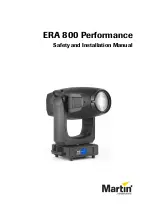
46
Oscilloscope Bandwidth and Sample Rate
The bandwidth of an oscilloscope is usually stated as the lowest frequency at which a sine wave's
amplitude is measured as 30% lower than its actual value (this is equivalent to a 3 dB drop in
power because 20log(1/sqrt(2)) is -3).
At the oscilloscope bandwidth, theory says the required sample rate (the Nyquist frequency) is
f
S
= 2f
BW
. However, the Nyquist sampling theorem assumes the signal is band-limited. Here, that
means there are no frequency components in the signal above f
BW
. This is unrealistic in many
practical measurements because it would require a "brick wall" filter:
Figure 28 - Bandwidth and sampling rate
However, digital signals have frequency components above the fundamental frequency (square
waves are made up of sine waves at the fundamental frequency with an infinite number of odd
harmonics), and typically, for 500 MHz bandwidths and below, oscilloscopes have a Gaussian
frequency response.
0 dB
-3dB
Attenuation
f
N
f
S
Frequency
Test Equipment Depot - 800.517.8431 - 99 Washington Street Melrose, MA 02176
















































